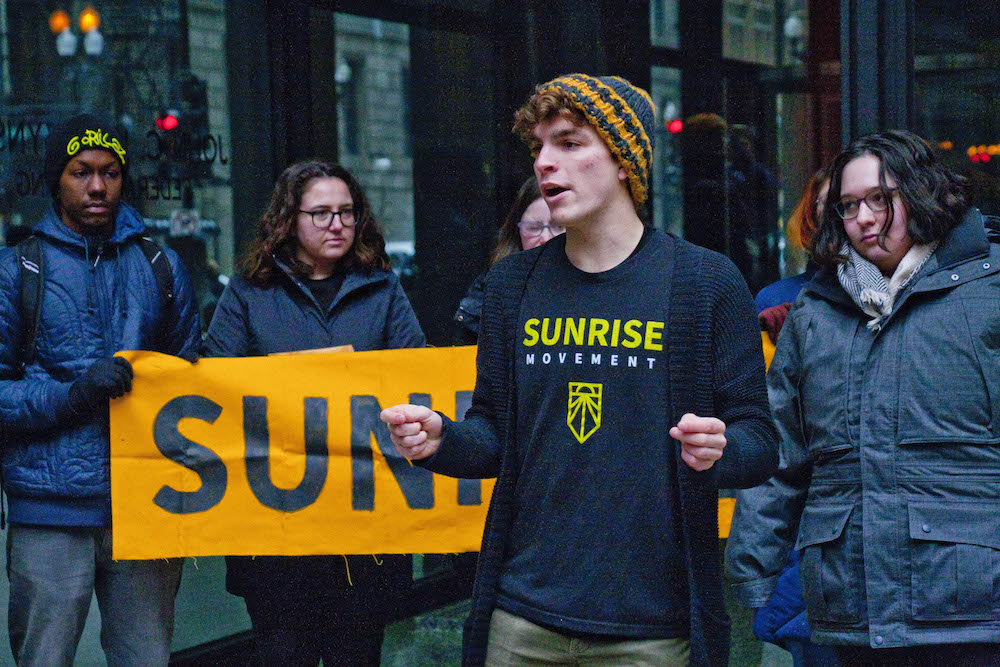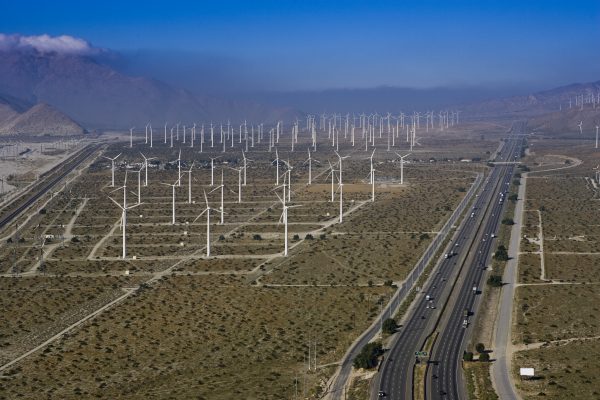It is refreshing to see the case against the Paris Agreement made so plainly: for far too long, climate politics has put too many eggs in the basket of global diplomacy, with little to show for it. With their vision of experimentation across different scales of governance, Charles Sabel and David G. Victor lay out a compelling vision of how to move onto more pragmatic ground. Their idea of experimentalist governance promises to open up new models of climate action and change our expectations for what climate progress looks like.
It is concerning, however, that their primary illustration of successful experimentalist governance is the Montreal Protocol. Indeed, the protocol has been held up as a promising model for action on global warming ever since it was ratified in 1987. So why haven’t the lessons of Montreal served to advance climate goals in the past three decades?
It should hardly need pointing out that greenhouse gases are significantly different from CFCs in ways that have implications for how they might be phased out. Whereas CFCs were byproducts of a relatively restricted set of goods made by a small number of manufacturers, greenhouse gases are the byproducts of the global economy itself: the world runs on fossil fuels and our ways of living are built around them. Sabel and Victor relegate to a parenthetical the fact that for the major producers of CFCs, newer and less polluting chemicals were more profitable—but this is the real story. Oil and gas companies are among the world’s biggest and most powerful, and for them, fossil fuels are not simply one product among many: they are the product, and they are wildly profitable. The annual value of CFC production was estimated at $2.2 billion in 1987, while revenue for the oil and gas sector was estimated at $2.5 trillion in 2019.
The problem isn’t simply that there are differences in context. Rather, Sabel and Victor’s proposal too often seems to treat institutional design as a skeleton key to a climate “fix.” One is left with the impression that meaningful decarbonization can take place only through technological innovation achieved via the closed-door haggling of regulators and industry. Institutional design does have a role to play, and their analysis of regulatory models offers good ideas for making progress in decarbonizing tricky sectors such as concrete and shipping. But in posing climate change as a problem of “governance” rather than politics, it threatens to fall into the same pitfalls as Paris.
In short, their vision overlooks two essential facts. First, that challenging the power of the fossil fuel industry is the sine qua non of climate politics. And second, that lasting climate action must win popular support.
On the first, the limits of Montreal as a model simply can’t be divorced from an analysis of the industry in question. The fossil fuel industry knows very well that action on climate poses an existential threat, which is why it has consistently sought to scuttle not only regulation but scientific consensus itself. It has been a notorious funder of climate denial in the United States, but it has also lobbied globally through groups such as the Global Climate Coalition, helping to render global climate agreements unworkable. Why should we expect a sudden good faith to develop solutions? Acknowledgments of “concentrated power” do little to suggest how it might be confronted.
When it comes to democracy, Sabel and Victor invoke Dewey’s metaphor of the “shoemakers and the shod” in suggesting a way to integrate the knowledge of experts with the “experience and values” of citizens. But the primary actors in their discussion of experimentalist governance are industries and their regulators—the shod appear only around the margins. In reality, the shoemakers are not friendly neighborhood cobblers or podiatric researchers but multinational conglomerates that act with impunity. Many people’s shoes have been pinching for a long time, and they have said so, but no one has paid them much attention. Sabel and Victor have little to say about how trust in elites might be restored.
Indeed, elites play an outsize role in Sabel and Victor’s analysis. Yet it is popular movements, from Standing Rock to Sunrise, that have driven climate politics forward and put much more serious climate action on the political agenda. Rather than thinking of the public and its protests as an obstacle to be overcome, we ought to experiment with ways of translating political momentum and bold ideas into concrete projects that decarbonize while also building public support for continued climate action. Sabel and Victor focus primarily on driving technological innovation, but political innovation will be even more important: figuring out how to deploy technologies we already have to cut carbon as quickly as possible, in ways that build constituencies for further climate action. This is where the Green New Deal comes in.
Sabel and Victor mention the Green New Deal only briefly, as a program for public investment that seems far from becoming reality. It’s true that the Green New Deal remains, as yet, a vision without a clear plan for implementation (though there is also a large and growing body of detailed policy work moving in that direction). In the immediate future, it will be crucial to figure out how the ideas animating the Green New Deal can work in practice. Here experimentalist governance has an essential role to play. After all, the original New Deal was itself deeply experimental.
To take one example, California and New Jersey have recently made encouraging commitments to electric vehicle mandates. Better still would be building out robust public transportation systems in order to reduce the need for so many private vehicles in the first place. On this front, experiments are already underway: the city of Lawrence, Massachusetts, made three primary bus routes free to riders last year. Boston is now considering a similar move, thanks to the leadership of city councilor Michelle Wu, who has also just released a Green New Deal plan for the city. Such experiments in accessibility can in turn build on long-standing subsidies for public transportation in countries such as Brazil that have entrenched a constituency for public transit.
Although “green jobs” have been much discussed in climate proposals, in most places there has been no systematic plan to wind down fossil fuel industries and provide a just transition for their workers to move into greener jobs. The current economic crisis presents an excellent opportunity to demonstrate proof of concept. In the United States alone, the drop in oil prices resulting from the global shutdown of economic activity and travel has resulted in an estimated 100,000 lost jobs; around the world, a million fossil fuel jobs are at risk. Why not take the opportunity to experiment with a transitional program that would place fossil fuel industry workers in jobs building green energy infrastructure or doing other decarbonization work, perhaps building off the German model for phasing out coal through a just transition? For that matter, the oil price crash presented a prime opportunity for the state to buy out floundering shale oil producers outright and put them on a path of managed decline. More generally, fossil fuel producers’ present vulnerability offers an excellent opportunity to undercut their power.
The Deweyan analogy of shoemakers and shod can come in handy where the energy transition hits the ground with projects seeking to build out clean energy infrastructure at scale. While wind farms, solar arrays, and transmission lines have been blocked by movements of people concerned about the destruction of local landscapes by private developers, democratic procedures that take local concerns seriously and commit to benefits for communities as well as industry could help build support for the expansion of renewables.
Most technological innovation follows the Tesla model: make products for the rich until the cost comes down for everyone else. The Green New Deal for Public Housing Act proposes the opposite: that green design can start with working-class people, tackling the challenges of building retrofits in public housing and developing models that can be used elsewhere. This is the logic of Europe’s Energiesprong initiative, now a centerpiece of the proposed Green Deal—to use public subsidy of low-income housing retrofits to cut both emissions and living costs while creating jobs and transforming the overall building sector. The U.S. Department of Energy’s Building Technology Office is now working to accelerate the diffusion of that model in the United States.
These proposals for domestic programs are not exhaustive, of course, and will have to adapt to local contexts. But experiments in one part of the world can offer lessons to others. They can also help build the bases for multilateral agreement: countries that have committed to Green New Deal–style programs could form climate clubs committing to use public investment to decarbonize at speed.
The ideas I’ve outlined here can start to do three crucial things. First, they can build popular support for action on climate change, developing a counterweight to the fossil fuel industry. Second, they can experiment with ways of living well without the resource-intensive consumption that has characterized our ideas of prosperity to date. And third, they can begin to chart a model of state and economy that can supplant the faltering neoliberal model. Instead of counterposing experiment, public investment, and global agreement, we should seek to align them.
Though such visions may seem politically out of reach, we are now nearly a year into a global crisis that has spurred previously unimaginable forms of state action. You would never know this from Sabel and Victor’s proposal, which reads as if it could have been written at any point since 1987. Responses to COVID-19 serve as a reminder that moments of crisis can give rise to radical experimentation. If experimentalist governance is to make good on its promise, it must be able to recognize such extraordinary situations as moments to venture genuinely novel ideas and transformative projects.








